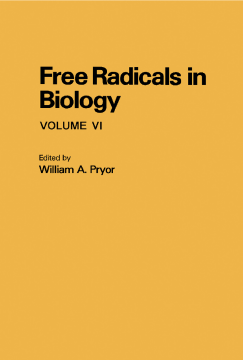
Additional Information
Book Details
Abstract
Free Radicals in Biology, Volume VI covers the significant biological implications of arachidonic acid chemistry in free radical biology. This 11-chapter volume explores the biochemistry of the prostaglandins, leukotrienes, and other products from arachidonic acid.
The introductory chapters describe the chemistry of the eicosanoids; the structures of prostaglandin and leukotriene compounds; the role of lipid hydroperoxides in controlling prostaglandin biosynthesis; and the oxidation of xenobiotics during prostaglandin H biosynthesis. The discussion then shifts to the effects of the so-called fatty acid paradoxes on cell proliferation, tumorigenesis, and metastasis, followed by chapters on arachidonic acid cascade process; the causes of lung injury conditions, such as hyperoxia; and the origin of low-level chemiluminescence in cells. This volume further deals with the oxy-radical involvement in parasitic diseases and the mechanisms for activation of aromatic amine carcinogens. The concluding chapters examine the controversial one- and two-electron mechanisms for activation of polynuclear hydrocarbon carcinogens and a hypothesis to rationalize the effects of radicals on the life span of mammals. These chapters propose that aging results from toxic by-products of metabolism, and longevity is determined by the ability of an organism to deal with these products.
This book will be of great benefit to biochemists, biologists, and physicists.
